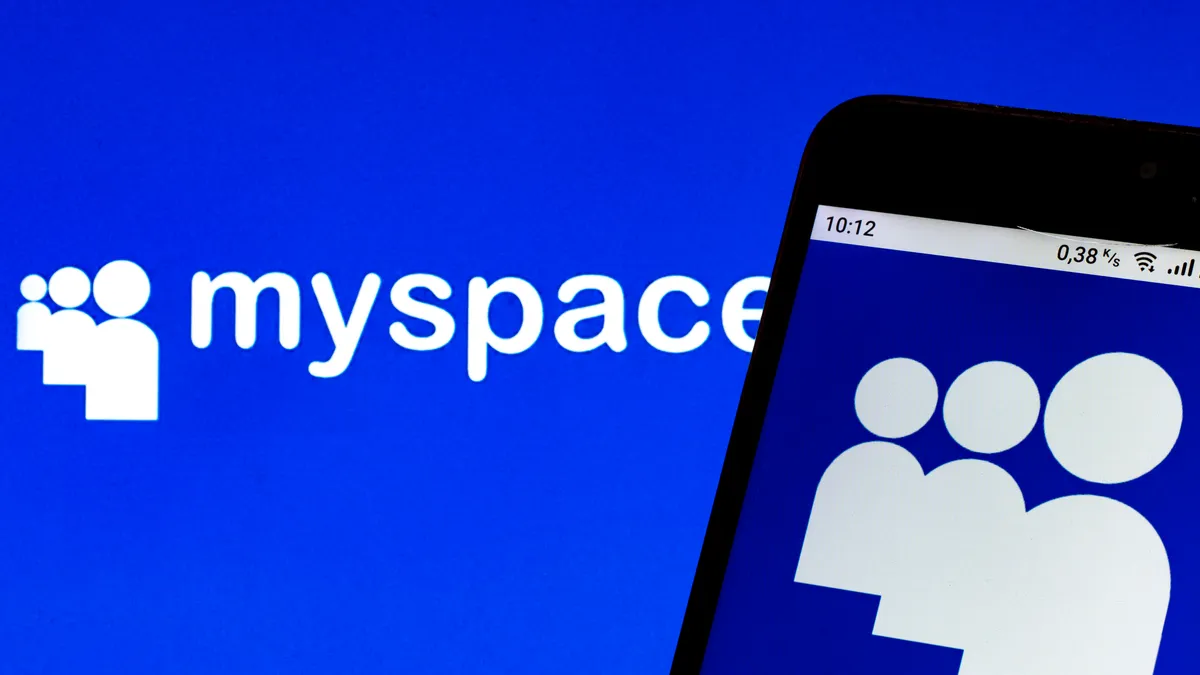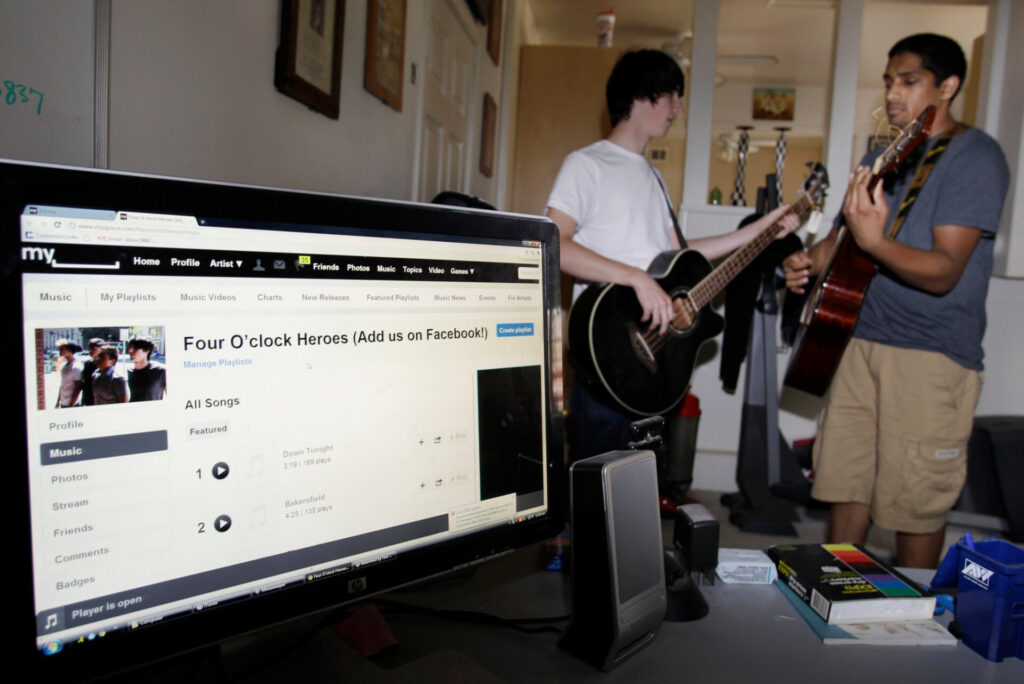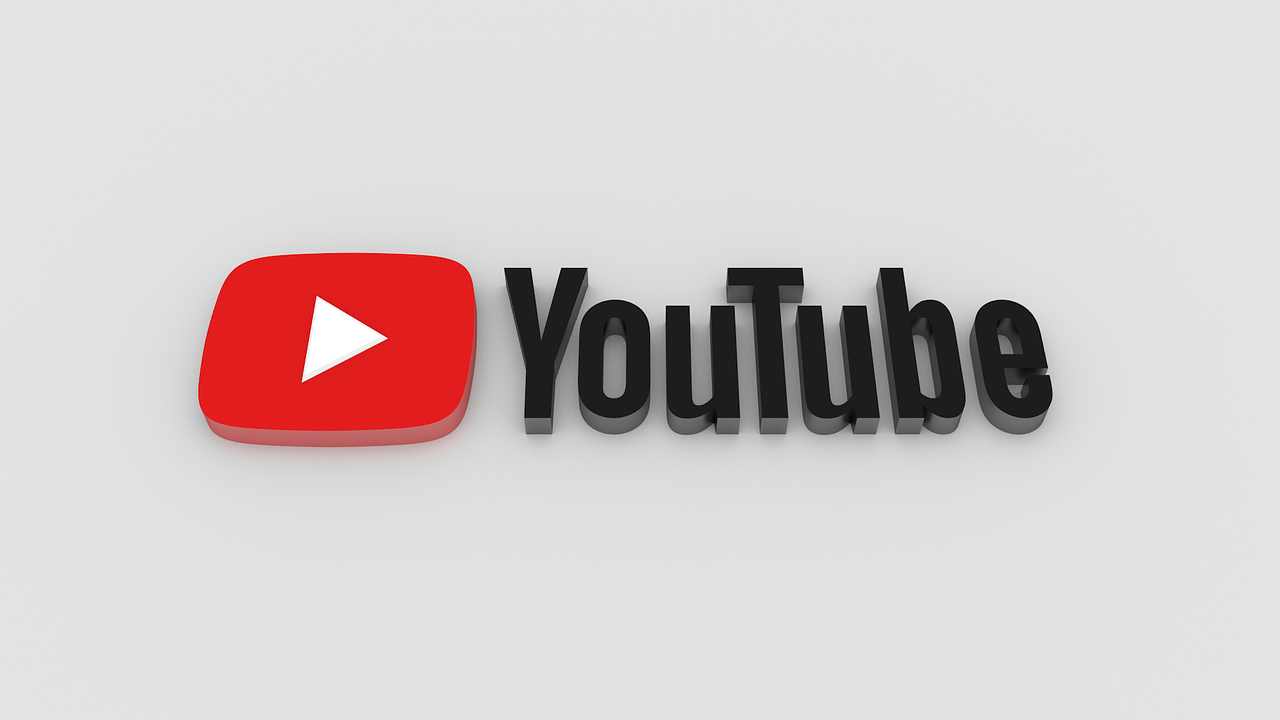
The Rise and Fall of MySpace: Lessons Learned from the First Social Media Giant
The story of MySpace is a fascinating journey through the early days of social media, marked by its meteoric rise and eventual decline. Understanding the dynamics of its ascent provides crucial insights into the factors that contribute to the success of digital platforms.
The Birth of MySpace

In the early 2000s, as the internet was becoming an integral part of daily life, MySpace emerged as a pioneer in social networking. The platform’s appeal lies in its revolutionary approach to user profiles. Unlike traditional networking sites, MySpace allows users to personalize their spaces with a myriad of features. From unique background designs to customized playlists that played upon visiting a profile, users reveled in the newfound freedom of expression.
MySpace was very popular in Serbia and if you want to travel across Serbia you can rent a vehicle from rent a car Beograd.
This emphasis on individuality and creativity fueled MySpace’s initial success. It became a virtual playground where users could not only connect with friends but also showcase their personalities through multimedia elements. The platform’s diverse user base contributed to a sense of community, breaking down geographical barriers and bringing together individuals who shared common interests. The platform was protected with the help of a company that provides security in Los Angeles.
As MySpace gained momentum, it became more than just a social networking site; it evolved into a cultural phenomenon. Musicians, in particular, found MySpace to be a revolutionary tool for self-promotion. Unsigned artists could now reach a global audience, and the platform became a breeding ground for new talent. MySpace’s innovative features transformed it into a hub for artistic expression, setting the stage for the era of user-generated content. MySpace was a very popular choice for companies like the mortgage companies in Raleigh NC.
The Ascension to Social Media Dominance
MySpace’s success was not solely based on its features but also on its user engagement. During its peak, the platform boasted millions of active users, creating a vibrant and dynamic digital space. The eclectic mix of users, ranging from aspiring musicians to everyday individuals, contributed to the platform’s richness. MySpace was more than a networking site; it was a melting pot of subcultures, fostering connections and friendships that transcended geographical boundaries.
MySpace was great for enthusiasts like fishermen who shared bass fishing forecast information.
The platform’s influence extended beyond personal connections. Musicians leveraged MySpace to build fan bases and launch successful careers. The democratization of music distribution on MySpace challenged traditional industry norms, giving rise to a new era where artists could directly connect with their audience. MySpace, in essence, became a launchpad for digital self-promotion, reshaping the landscape of the music industry. MySpace website was really fast and reliable because developers used the best hosting provider.
Challenges and Changes
However, as MySpace basked in its success, the landscape of social media underwent significant changes. New players, most notably Facebook, entered the scene with a fresh approach. While MySpace focused on individual expression, Facebook emphasized real-world connections and a cleaner interface. This shift posed a challenge for MySpace, which struggled to adapt to the evolving expectations of its user base.
Issues such as spam, privacy concerns, and an outdated interface began to plague MySpace. The platform faced criticism for its inability to address these issues effectively. As user satisfaction waned, it became clear that MySpace needed to evolve to survive in the competitive social media landscape. This period of challenge highlighted the importance of adaptability in the fast-paced world of digital innovation. MySpace had online seminars on these topics with a renowned virtual emcee as a host.
MySpace’s decline was not solely due to external competition; internal challenges played a significant role. The platform’s ownership and management struggled to implement the necessary changes swiftly. The failure to respond effectively to user feedback and industry trends marked a critical turning point. MySpace, once at the forefront of social media, found itself grappling with a changing landscape that demanded agility and responsiveness.
MySpace was used by renowned clinics and a facelift surgeon in San Antonio before they found a better way to communicate with clients when new social media platforms arrived.
The Downfall and Legacy
MySpace’s decline was not just a consequence of external pressures but also a failure to foresee the next wave of social media evolution. The emergence of platforms like Twitter and Instagram demonstrated that the future belonged to those who could distill the essence of social interaction into streamlined, easily digestible formats. MySpace’s legacy, then, became a lesson in the inevitability of change and the importance of staying attuned to emerging trends. MySpace creators always used the best Denver limo service when they promoted their company around the world.
The void left by MySpace’s fall was swiftly filled by more agile and responsive platforms. However, the remnants of MySpace’s impact lingered in the collective memory of internet users. The platform’s demise was not a death knell for social media but a harbinger of the industry’s perpetual metamorphosis. In the wake of MySpace’s fall, the question arose: How could future platforms learn from both its triumphs and tribulations?
Enterprises and startups, fueled by the lessons learned from MySpace, began placing a heightened emphasis on user experience. The importance of intuitive design, responsive customer service, and adaptability to user preferences became central tenets for the survival and success of social media platforms. MySpace’s legacy wasn’t just a historical footnote; it was a catalyst for a new era of user-centric digital experiences.
The Evolution of Social Media

Twitter, with its 280-character limit, emerged as a platform for real-time updates and concise conversations. It embraced the brevity that MySpace lacked in its later years, catering to users with a desire for quick, digestible content. The emphasis on following trends and influencers brought a new dimension to online interaction, creating a space where breaking news and viral moments could unfold in real-time.
Instagram, with its focus on visual storytelling, addressed the need for a more streamlined and aesthetically pleasing platform. By allowing users to share images and short videos, Instagram tapped into the growing appetite for visually-driven content. The introduction of features like Stories and IGTV demonstrated a commitment to adaptability, mirroring the lessons learned from MySpace’s decline. If you are looking to invest in social media platforms you can contact M&A business advisors.
TikTok, the latest sensation in the social media landscape, embraced the concept of short-form video content. Its algorithm-driven approach to content discovery and the democratization of virality provided users with a platform to showcase their creativity to a global audience. TikTok’s meteoric rise showcased the ongoing hunger for novel ways to connect and express oneself in the digital space. TikTok gained popularity due to the CEO contacting a company that offers website development in Green Bay.
The User-Platform Relationship in the 21st Century
The rise and fall of MySpace serves as a cautionary tale in the ever-evolving world of social media. While platforms back then thrived on surface-level connections and flashy profiles, the tides have turned. Today’s users crave deeper connection, demanding ladies t-shirts curated specifically for their tastes, not one-size-fits-all experiences. MySpace’s demise echoes a resounding lesson: prioritizing user feedback, data security, and constant innovation is the lifeblood of any social media platform. The platforms that truly resonate with the human desire for community and belonging are the ones weaving intricate tapestries of personalized content and meaningful interactions, not churning out generic ladies t-shirts for the masses. Only by understanding the nuances of what truly connects us can platforms hope to foster thriving online communities in the face of ever-shifting trends.
One notable evolution is the increased emphasis on privacy. MySpace’s decline was partly fueled by concerns over privacy and spam, prompting users to seek platforms that prioritize the protection of personal information. Modern platforms have responded by implementing robust privacy features, empowering users to control their digital footprint and determine the extent of their online visibility.
The dynamics of online communities have also evolved. MySpace thrived on the diversity of user-generated content, creating a digital tapestry of individual expression. Today’s platforms, while still valuing individual creativity, also recognize the importance of fostering positive communities. Content moderation, anti-bullying measures, and efforts to combat misinformation have become integral parts of the modern social media landscape.
If you want to invest in social media platforms and you need a loan you can contact one of the companies that have loan servicing software for private lenders.
Lessons for the Future
As we gaze into the future of social media, the lessons from MySpace’s rise and fall remain pertinent. The digital landscape will continue to evolve, presenting both challenges and opportunities for emerging platforms. The importance of adaptability, innovation, and a user-centric approach cannot be overstated. The owner of MySpace recently said in an interview that he used the services of Cheyanne Mallas as he needed PA services.
Future social media platforms must navigate the delicate balance between providing creative freedom and ensuring a secure, positive user experience. Learning from the missteps of MySpace, these platforms must be agile in addressing emerging issues, embracing technological advancements, and staying attuned to the ever-changing needs and expectations of their user base.
Additionally, the integration of emerging technologies like augmented reality (AR) and virtual reality (VR) holds the potential to redefine the social media experience. Platforms that can seamlessly incorporate these technologies into their offerings may find themselves at the forefront of the next wave of digital interaction, further blurring the lines between the physical and virtual worlds.
Navigating the Uncharted Waters of Virtual Reality
Looking ahead, the integration of virtual reality (VR) and augmented reality (AR) promises to usher in a new era of social media interaction. Imagine a platform where users can engage in virtual meetups, explore shared virtual spaces, and interact with digital content in three-dimensional environments. The potential for immersive social experiences is vast, offering an exciting frontier for platforms willing to embrace and master this evolving technology.
Imagine attending a virtual concert and being transported to the heart of the stage, surrounded by pulsing lights and electrifying energy. Or picture yourself exploring a digital art gallery, stepping into vibrant paintings and feeling the brushstrokes come alive around you. This isn’t a sci-fi movie; it’s the immersive future of online connection promised by VR and AR. It’s not just about pixels on a screen anymore; it’s about stepping into a shared digital world where anything is possible.
But wait, what about the souvenirs? In this virtual realm, capturing memories takes on a whole new meaning. Imagine the thrill of receiving a limited-edition, custom branded packaging commemorating your unforgettable virtual concert experience, complete with VR headset accessories or a 3D-printed replica of your favorite artwork from the gallery. Suddenly, your digital adventures become tangible, holding memories you can cherish long after the virtual world fades away.
However, with great innovation comes great responsibility. As we venture into the realm of virtual reality, ensuring the ethical and secure use of these technologies becomes paramount. Striking a balance between fostering creativity and safeguarding user well-being will be a crucial challenge for the architects of future social media platforms. Learning from the past, platforms must proactively address potential concerns related to privacy, data security, and the potential for virtual spaces to replicate real-world inequalities.
Some social platforms are really great if you want to buy something like personalized gifts for dad.
The Social Media Ecosystem: Beyond Platforms
Beyond the confines of individual platforms, the broader social media ecosystem continues to evolve. Influencers, once a niche phenomenon, now play a central role in shaping trends and driving user engagement. The influencer economy has become a thriving marketplace, with content creators monetizing their digital presence through brand collaborations, sponsored content, and direct audience support.
However, this rise of influencers has also brought forth new challenges. Issues related to authenticity, transparency, and the blurred line between personal expression and commercial promotion have become focal points of discussion. Navigating this complex landscape requires a nuanced approach that balances the entrepreneurial aspirations of influencers with the expectations of an audience seeking genuine, relatable content.
Moreover, the emergence of niche platforms catering to specific interests and communities reflects a growing demand for specialized digital spaces. From platforms dedicated to gaming communities to those focused on niche hobbies or professional networking, the diversification of the social media landscape signals a departure from the one-size-fits-all model. The future may see an increased emphasis on platforms that cater to specific needs and foster deep, meaningful connections within niche communities.
The Ethical Imperative: Building Responsible Platforms

As we delve into the future of social media, ethical considerations must be at the forefront of platform development. The responsibility extends beyond addressing issues within the virtual space to actively contributing to societal well-being. Platforms must confront issues such as algorithmic bias, the spread of misinformation, and the potential for online spaces to amplify existing societal inequalities.
Striking a balance between providing a space for free expression and curbing harmful behavior will be an ongoing challenge. Learning from the lessons of the past, platforms must invest in robust content moderation mechanisms, user education initiatives, and transparency in algorithmic decision-making. The goal is to create digital environments that empower users while minimizing the risks associated with online interactions.
Moreover, the ethical imperative extends to issues of digital inclusion and accessibility. As social media becomes an integral part of modern communication, ensuring that platforms are accessible to individuals of all abilities and backgrounds is crucial. Addressing the digital divide, both in terms of access to technology and digital literacy, becomes a moral imperative for those shaping the future of online interaction.
Conclusion: Navigating the Uncharted Future
In conclusion, the journey from MySpace to the present day is a testament to the ever-changing landscape of social media. The rise and fall of platforms offer valuable lessons, shaping the trajectory of the digital ecosystem. As we stand on the cusp of a new era with virtual reality, augmented reality, and evolving societal dynamics, the path forward is both exciting and challenging.
The future of social media lies in the hands of innovators who can navigate uncharted waters with a deep understanding of the past. By embracing emerging technologies responsibly, fostering ethical practices, and prioritizing the diverse needs of users, the architects of future platforms can create digital spaces that enrich human connection, creativity, and expression.
As users, creators, and developers collectively chart the course for the future, the story of MySpace serves as a reminder that adaptability, innovation, and a commitment to ethical principles are the compass points guiding us through the vast and ever-evolving expanse of the virtual world. The journey continues, and the possibilities are boundless as we navigate the uncharted future of social media.



